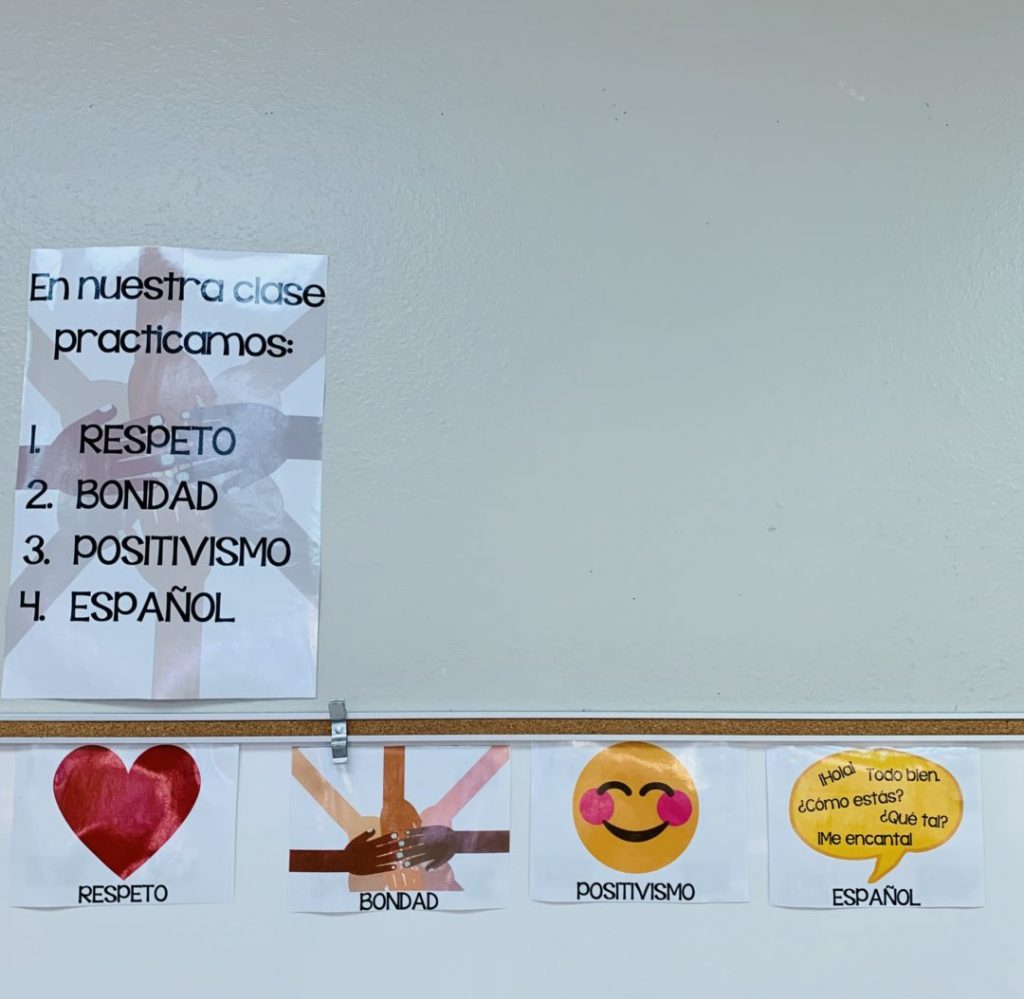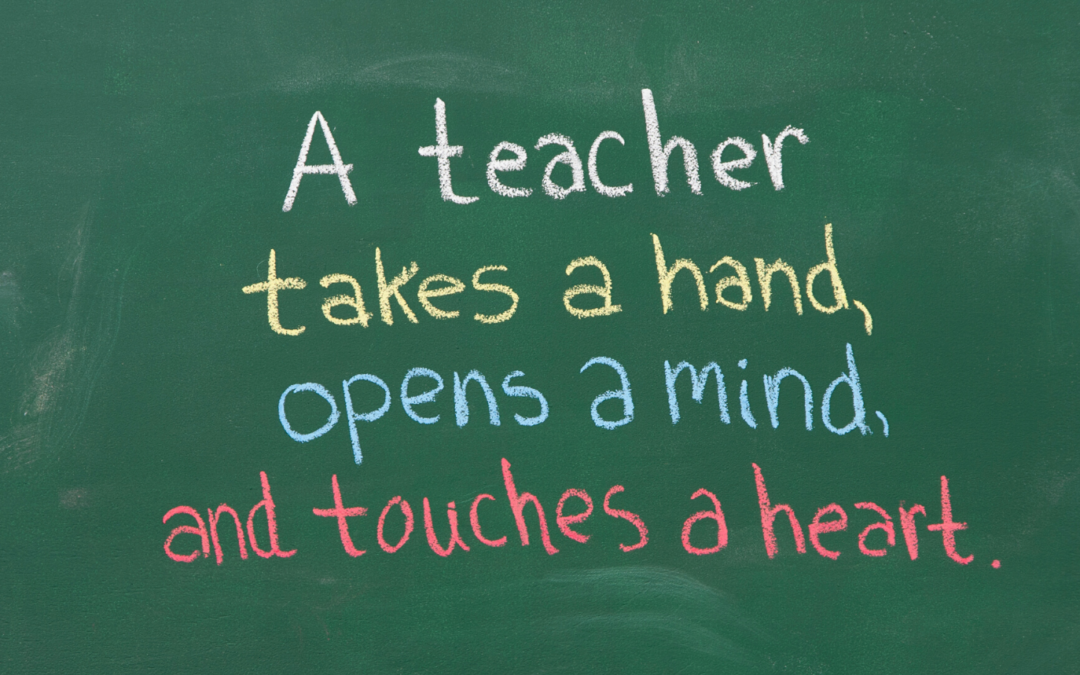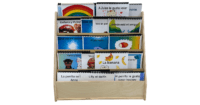This is part 2 of the post “Tips for First-Year Teachers.” If you missed it, please make sure to read it here and come back to this post.
Teaching in the Target Language
(From a previous post called “My Journey as a Spanish Teacher”) In the first program where I taught FLES, all Spanish teachers were required to stay 100% in the TL. I had success doing all I could to get my point across in my classes. I spent a lot of time looking for visuals, making posters, and using a lot of TPR and gestures! The program was successful, but my students thought that I couldn’t speak English. The children were trying harder to communicate with me in the TL, but there was more to it than that. I had a website, and I also sent newsletters home, but a lot of the parents apparently still thought that I didn’t know English.
One day, I was approached by a parent, and his comment was, “I thought you didn’t know English!” At that moment, I had mixed feelings. Yes, I wanted my students to use Spanish with me at all times, during class, recess time, in the hallway, and so on, but I was also sad because I was also there to “promote bilingualism,” and they thought I only knew Spanish. I was traveling from classroom to classroom, and the homeroom teachers stayed in the classroom during the 20 minutes of Spanish instruction. I recall that I rarely had to work hard on classroom management because the teachers were there to help. I also realized that I didn’t really know anything about my students.
Once I moved to a different school, the policies about teaching 100% in the TL were different. The school already had a Spanish and French teacher for grades 4 through 6, so I was hired to create the other part of the program with the help of my colleagues, and we used a backward mapping process to create our curriculum for grades pre-K to 3. Both the French and Spanish teachers used some English with their students. At first, I stuck with using only Spanish in class, mostly out of habit, and my desire to push students to use the TL. I started noticing that the other language teachers had really strong connections with their students, and their students would actually look for them during recess time. That was when it dawned on me that I had been missing an opportunity to connect with my students and get to know a little bit more about them. So by my second year in the school, I finally became more flexible and started to allow interactions with my students in their L1 during times out of my class.
Children would actually come and sit next to me by the bench on the playground, and we had great conversations, from talking about my family in Colombia to their plans after school! That’s when I realized that it was okay for them to use their L1 to communicate with me during recess time. I also feel that because I am a native speaker, they need to know that I am bilingual and that I have an interest in their language and culture. Now, keeping my class at 90 to 95 % TL in my classroom continues to be my goal.
Classroom Routines
As I mentioned above, keeping it simple is the best way, at least during your first year. In a regular pre-COVID setting, depending on the students’ level:
- I greet my students at the door or they enter the class by saying “La frase de la Semana”.
- Once in the classroom, we read the class message together, sometimes sing a song, a quick check-in on how they are doing.
- We proceed to do the different activities of the class including games, brain breaks, yoga poses and breathing exercises.
- End the class by thanking each other, where I say: “Gracias, class”, and students reply: “Gracias, maestra” (ps: I will change to profe this year because maestra doesn’t sound natural to me. In my prior years in Boston, students called me by first name – this is a topic for another post!)
- If I have time I do a quick “exit ticket” for the children to line up.
Other classroom routines might include having jobs for your students, cleaning and sanitizing hands, bathroom procedures, visits to the nurse, and call-response chants. (See this post on Instagram to learn more about the origin of call-response chants)
Parents also like to know what’s going on in your classes. Having a monthly newsletter or a website as a routine to communicate with your parents is also a great PR for your program!
Setting Up Your Classroom Norms
Simple is my motto! I think three to five norms accompanied with good visuals are great! I usually have them in Spanish, but I introduce them and discuss them in English with my students. Some teachers like to create their norms along with their students, but I usually go with generally simple rules that are phrased in a positive way. I keep them in front of the room to point at them if I need them as reference. I have experimented with different norms every year, and by far these have worked the best:

You can also piggyback on the norms the homeroom teachers have created for their classrooms.
Join a Language Organization
Stay up to date with professional development by joining ACTFL (The American Council on the Teaching of Foreign Languages), NNELL (The National Network for Early Language Learning), or your state language organization. They usually send newsletters to help you stay abreast of the newest research and methodologies in language teaching. If possible attend national and/or regional conferences. Sometimes it is important to be in the same space sharing with people who care about and to whom it matters what you do.
Be You and Make Time for YOU!
With so many teachers sharing on social media it is inevitable to see ideas and want to bring them to your classroom and expect to get the same results as that teacher who posted on Instagram. To be honest, I have been there too, but the reality is that we never know what’s behind the scenes, so if you see an idea, read it, watch the video and see how you can adapt it to the needs of your students and to the special qualities of your personality and style. Remember that you got hired to do that job because you were the best-qualified teacher for it. So start with trusting in yourself!
Last, but not least, make time for yourself! Start now when you are new, use the weekends to disconnect if you can. Make time to take walks, exercise, or watch your favorite show on your couch. I am telling you this because I have made the mistake to get into the routine of just working, even on the weekends – sometimes to the point that I even forget that I have two kids. These last years I have made it intentional to only bring work home if necessary, and it has made a difference in my classroom. A refreshed teacher gives everyone the best chance for truly engaged students!
Please feel free to contact me if there is anything I can do for you!






